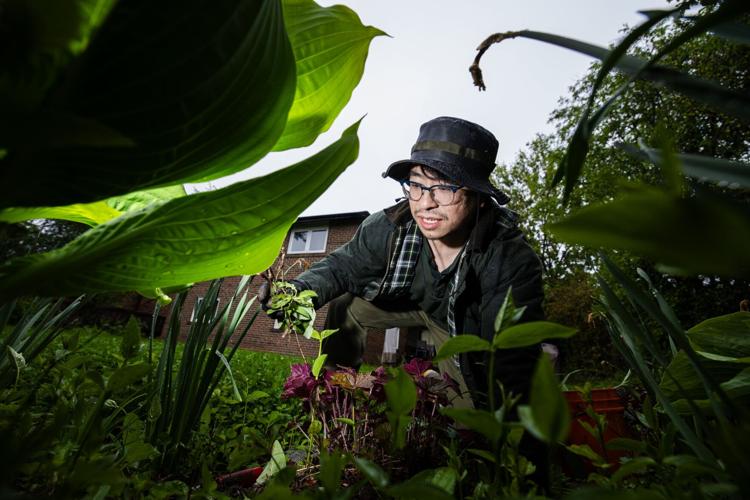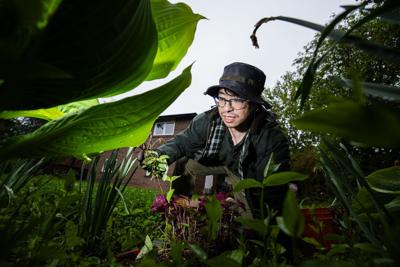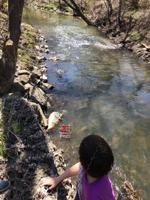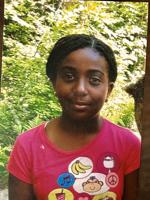For my parents, the perfect backyard looks like the Windows 95 wallpaper: grass so uniformly green and freshly cut it might as well be carpet. There are no trees that bear fruit and attract animals (and their poop). There are zero bushes for animals to shelter in (and poop). No flowers for bees to hover around because they don’t want my sister and me to end up like Macaulay Culkin at the end of “My Girl.” They are literally the people who would love to pave paradise and put up a parking lot.

Wild strawberries now grow in Karon Liu’s backyard lawn, part of his effort to replace grass with pollinator-friendly plants in his parents’ yard.
Nick Lachance ÎÚÑ»´«Ã½ StarIn their defense, we immigrated from a part of Hong Kong where the apartments they lived in didn’t have an inch of green space, let alone a backyard with gardens and lawns to maintain throughout the year (the first thing they did when they moved in was dig up the tulips the previous owner had planted because the squirrels kept eating the bulbs). To them, nature was a nuisance, an impediment to industry and a well-off, cosmopolitan life. And so I grew up believing that. Going barefoot on the grass? What if I stepped on thistle or, worse, poop? Asking me to climb a tree would be like asking me to touch a rotting, slimy piece of wood crawling with centipedes and spiders that ate my flesh (it was the ’80s, and for Mom and Dad, Stranger Danger extended to isopods).
Sunnybrook Park became a refuge for editor-in-chief Nicole MacIntyre’s family, rekindling their appreciation for the outdoors.
Sunnybrook Park became a refuge for editor-in-chief Nicole MacIntyre’s family, rekindling their appreciation for the outdoors.
To no one’s surprise, I was a pill at recess. While my classmates climbed trees, raced each other by rolling on the grass, and let bugs crawl over their arms to get a closer look, I stood there, only allowing the soles of my sneakers to touch the unholy and dirty ground. Sometimes I would sit on the grass, as long as I had a jacket to act as a barrier, and even then I winced at the idea of whatever grubby, disgusting thing was scrummaging under my butt, protected by only a thin layer of polyester.

A mix of wild strawberries and native plants like goldenrod and coneflowers now fills the once bare lawn in the reporter’s backyard.
Nick Lachance ÎÚÑ»´«Ã½ StarIn my 30s, I took over the bulk of the household duties from my aging parents, including tackling a long-neglected backyard overcome by weeds and a decomposing fruit tree that my dad accidentally killed from lopping off one too many (more like 20) branches because he was annoyed by the cherries that fell from it. I literally got down on my hands and knees, pulling out hundreds of invasive weeds down to the taproots, occasionally getting stung by thistle, spooked by something crawling across my neck, and yes, coming across a dried sausage-looking dookie that I just scooped into the green bin without a second thought. My elementary school self would be impressed.
The flower beds that my parents had dug out, we put back in — replaced with bee- and butterfly-loving swamp milkweeds, Joe Pye weeds, asters, black-eyed Susans, coneflowers, and goldenrods — as I learned about the importance of cultivating ecosystems that support native pollinators. Much to my parents’ chagrin, the lawn shrunk, the grass slowly replaced by wild strawberries and ginger that I promised wouldn’t result in a family of raccoons moving in — and do help crowd out the thorny thistles they were worried their granddaughter might step on when she visits.
From forested ravines to reclaimed landfills, these trails offer scenery, history and beginner-friendly paths just beyond ÎÚÑ»´«Ã½â€™s city limits.
From forested ravines to reclaimed landfills, these trails offer scenery, history and beginner-friendly paths just beyond ÎÚÑ»´«Ã½â€™s city limits.
Slowly, their attitudes changed, admitting the house looks better with a splash of colourful flora and variegated greenery (I also got a fun anecdote from Mom about how she ate hosta leaves as a kid). They even tried the fingernail-sized wild strawberries on our front lawn, even though they didn’t come in a plastic clamshell from the supermarket. Mom also helped me dig a hole for a replacement tree in the backyard last summer, as long as I promised her that the American elm would not result in a backyard of rotting fruit.

Growing up, Karon Liu was afraid of nature — grass, bugs, even dirt. But after taking over yard duties, he embraced native planting and learned to value natural ecosystems.
Nick Lachance ÎÚÑ»´«Ã½ StarThis is all to say I wish I hadn’t been so afraid of nature as a kid. I think of all the wasted summers I spent inside rather than literally touching grass. Yeah, it was pretty great sleeping in till noon and watching summer reruns of Oprah, but no one turns that into an ’80s teen summer adventure movie. And this was before the internet and smartphones were a thing. I’m sure both parents and kids would agree that some screen-free time would do everyone some good, especially if it involves building a lifelong love for the outdoors early on. It’s also just a good life skill to have: being comfortable outdoors, keeping cool when it comes to encountering wildlife, and seeing and feeling, first-hand, the effects climate change has on natural environments.
Now decades later, Jo-Anne Robertson reflects on how Camp Huronda gave her tools to live with type 1 diabetes and a community that still supports her.
Now decades later, Jo-Anne Robertson reflects on how Camp Huronda gave her tools to live with type 1 diabetes and a community that still supports her.
It’s why I encourage anyone reading this to support the ÎÚÑ»´«Ã½ Star’s Fresh Air Fund, a century plus-old initiative that helps send thousands of kids to day and overnight camp programs across the province. As someone who is a late bloomer when it comes to appreciating nature, I would have loved another shot at being surrounded by fellow kids and not being so afraid of muddy shoes and grass stains. Stepping out of my comfort zone gave me a new appreciation for my natural surroundings, and the impetus to care for it for future generations. I have a closet of permanently mud-stained socks, shirts and shoes but in return I have a thriving mini-ecosystem in my yard that I’m proud to say I created with my bare hands.
Star reporter Serena Austin’s early introduction to camping broadened her perspective and gave her a lasting appreciation for the outdoors.
Star reporter Serena Austin’s early introduction to camping broadened her perspective and gave her a lasting appreciation for the outdoors.
The ÎÚÑ»´«Ã½ Star Fresh Air Fund
How to donate:
Online:
To donate by Visa, Mastercard or Amex using our secure form.
By cheque:
Mail to The ÎÚÑ»´«Ã½ Star Fresh Air Fund, 8 Spadina Ave., ÎÚÑ»´«Ã½, ON M5V 0S8
By phone: Call 647-250-8282
Tax receipts will be issued.
FOLLOW US ON SOCIAL:
Instagram: @torontostarchildrenscharities
Facebook: @thetorontostarchildrenscharities
X: @TStarCharities
LinkedIn: The ÎÚÑ»´«Ã½ Star Children’s Charities
TikTok: @torstarchildrenscharity
#StarFreshAirFund



























